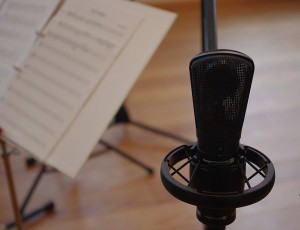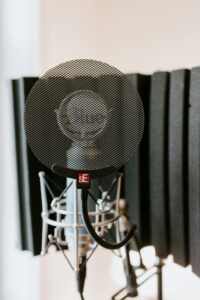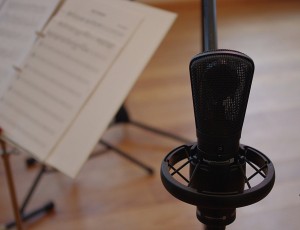 Students often ask me when is it time to upgrade their home studio and what should they upgrade first. Well, it depends. Are they talking about their recording equipment, their recording software, or their physical studio space? I always remind them of the old saying, “If it ain’t broke, don’t fix it!” If their current setup is working and they are landing voice-over jobs, why upgrade? If you have:
Students often ask me when is it time to upgrade their home studio and what should they upgrade first. Well, it depends. Are they talking about their recording equipment, their recording software, or their physical studio space? I always remind them of the old saying, “If it ain’t broke, don’t fix it!” If their current setup is working and they are landing voice-over jobs, why upgrade? If you have:
- A recording space that has no room reflection (echo) with a low noise floor (ambient background noise of -57 or lower),
- A reliable computer,
- A good recording software that records at 44100 hz at 24 bits,
- A large diaphragm condenser microphone,
- A quality USB audio interface and,
- Professional flat response headphones,
then an upgrade most likely isn’t necessary. However, if you are lacking any of the above,it’s time for an upgrade..
Microphones:
A large diaphragm condenser microphone is the perfect choice for voice-over recording because it picks up the richness, texture and frequencies in your voice. There are many to choose from ranging in price from $100 to $3,000. I don’t recommend any particular one, because we all have unique frequencies in our voices and each microphone picks up those frequencies differently. Go to a music store near you and test out several before you buy one. Choose the one that sounds the most natural with your voice.
Here is a list of popular microphones for VO work:
- Neumann TLM 103 $1,300.00
- Rode NT 1-A $230.00
- Audio-Technica AT4040 $300.00
- Blue (baby bottle) $300.00
- Focusrite Scarlett SM 25 $150
USB Audio Interface:
I am not a fan of USB microphones. They lack the quality you get using an analog condenser microphone running through a USB audio interface. If you’re using a USB microphone, I highly recommend you upgrade to an analog large diaphragm condenser microphone and purchase a quality USB audio interface. There are several to choose from and they all work equally well.
Here is a list of popular USB Audio Interfaces:
- Scarlett Solo or 2i2 $100.00 – $150.00
- PreSonus Audiobox $100.00
- Tascam US 2×2 $150.00
- Steinberg UR22mkll $150.00
Headphones:
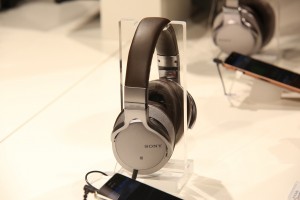 It’s very important to use professional flat response headphones when mixing voice-over. Standard headphones for music have enhanced bass and treble to make the music sound bigger and better. Mixing through these headphones will fool you. Your voice may sound fabulous, but take away the enhanced bass and treble and what do you have? The producers you are sending your auditions to will usually be listening through flat response studio monitors or professional flat response headphones. and will not hear all the enhancements you heard. That’s why it’s important that you hear exactly the same thing they will hear. Most beginner voice-over talents use headphones.
It’s very important to use professional flat response headphones when mixing voice-over. Standard headphones for music have enhanced bass and treble to make the music sound bigger and better. Mixing through these headphones will fool you. Your voice may sound fabulous, but take away the enhanced bass and treble and what do you have? The producers you are sending your auditions to will usually be listening through flat response studio monitors or professional flat response headphones. and will not hear all the enhancements you heard. That’s why it’s important that you hear exactly the same thing they will hear. Most beginner voice-over talents use headphones.
Here is a list of popular brands:
- Sony MDR 7506 or MDR v6 $100.00
- AKG K 240 MK II $130.00
- Audio-Technica ATH-M50x $150.00
- Sennheiser HD25-1 II $275.00
- Focusrite Scarlett $100
Studio Monitors:
This is more for convenience than necessity. However, if you mix audiobooks or long narration reads, they’re more comfortable to work with. Just make sure you use professional flat response tuned studio monitors. They range in price by size from $150 to $500 each and are available at most large music stores. For voice-over mixing, you only need one because voice-over should always be recorded mono.
Recording Software:
Such A Voice recommends the use of Audacity because it’s a high quality recording software that’s easy to learn (from our Intro to Audacity videos) and it’s a free download. Unless you are planning on getting into full production, recording multitracks and music, there’s no need to upgrade from this software. However, if this is your goal, there are many other recording softwares out there to consider.
Here is a list of popular recording software:
- ProTools $900 or $400 per year lease.
- Pro logic $350
- Adobe Audition $350
- Sound Forge 10 (Windows only) $500
Studio Space:
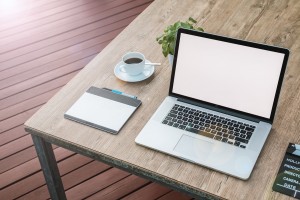 Where you set up your home studio is just as important as having the right equipment. This physical space must be quiet without any consistent ambient background noises or hums, and must have non-reflective surfaces. The most obvious choice would be a walk-in closet because they’re usually an interior room with no ambient noises and filled with echo-preventing sound-absorbing material (your clothes). The biggest problem with this is that it’s a temporary setup. If you have an unused bedroom or home office with a closet large enough, this is a good option for a more permanent setup. If you don’t have any of the above, you can still find a way, you’ll just have to be more creative.
Where you set up your home studio is just as important as having the right equipment. This physical space must be quiet without any consistent ambient background noises or hums, and must have non-reflective surfaces. The most obvious choice would be a walk-in closet because they’re usually an interior room with no ambient noises and filled with echo-preventing sound-absorbing material (your clothes). The biggest problem with this is that it’s a temporary setup. If you have an unused bedroom or home office with a closet large enough, this is a good option for a more permanent setup. If you don’t have any of the above, you can still find a way, you’ll just have to be more creative.
The most important thing is to find the quietest place in your home that you can use permanently. You may have to turn off any fans or AC while you’re actually recording to lower your ambient background noise. To prevent room reflections or echo, figure out a way to surround your microphone with sound-absorbing material.You can also purchase a portable sound booth or build one.
Here is a list of portable sound booths:
- Harlan Hogan Porta Booth Pro $350
Here is an article showing you how to make one for less. http://harlanhogan.com/portaboothArticle.shtml
- Kaotica Eyeball $200
For more choices google “portable voice-over sound booth.” For a walk-in sound booth:
- GretchKen Booth $4,000 to $8,000
- Whisper Room $4,500 to $7,500
- Vocal Booth $5,000 to $15,000
The bottom line is, if you purchased the Focusrite Scarlett Studio Package offered to you by Such A Voice, you have all the equipment you need to record high quality voice-over auditions. If you’re using this equipment in a room with no room reflection and a low noise floor there’s no need to upgrade. However, if you don’t have this kind of state-of-the-art equipment and are not recording at the highest quality, or if your space is a temporary setup, upgrade soon. It’s important to have your home studio setup and ready to go when that perfect job comes along.
Find this useful? Check out our VO Pro Membership to learn more about similar voice-over topics.
Ben Marney has been a studio engineer, singer and musician for over 40 years. Over the last 8 years (as a full time voice-over talent) he has recorded literally thousands of radio and television commercials and has been the narrator for three national television shows airing on the Discovery, Destination America and Sportsman channels. He currently resides in Port St. John, Florida where he (with his wife’s permission) produces voice-overs out of his home studio.

